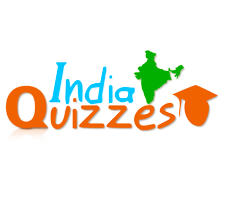- Visvamitra
- Vasishtha
- Atri
- Bhrigu
Explanation:
The battle of ten kings was fought between Sudas, a Bharata king of the Tritsu family and the confederacy of ten well-known tribes- Puru, Yadu, Turvasa, Anu, Druhyu, Alina, Paktha ,Bhalanas,Shiva and Vishanin. In the bloody and decisive battle on the banks of River Purushni, the Bharatas emerged victorious. The reason behind the war is the rivalry between Vishwamitra and Vasishtha.
In which among the following parts of Constitution of India are enshrined the Fundamental Duties?
- Part III
- Part IIIA
- Part IVA
- Part IV
Explanation:
The 42nd amendment Act 1976 added a new part in the constitution part IVA. It incorporated the fundamental duties by inserting a new article 51A below article 51. The objective of incorporating the fundamental duties is to place before the country a code of conduct, which the citizens are expected to follow.
- Nanaghat
- Nasik
- Paithan
- a and b
Explanation:
The Nasik and Nanaghat inscriptions are the major sources that gives detailed information about the Satavahana empire. The Nasik inscription was made by Gautami Balasari and Nanaghat inscription was issued by Naganika.
- Annie Besant
- Sarojini Naidu
- Madam Cama
- Usha Mehta
- Syed Ahmad Khan
- Hasrat Mohani
- Maulana Azad
- Mohammad Ali Jinnah
“Muazzama” was the title of which of the following Mughal Emperors?
- Shah Alam II
- Mohammad Shah
- Bahadur Shah Zafar
- Jahandar Shah
“Springing Tiger: A Study of a Revolutionary” is a biographical work on __?
- Bhagat Singh
- Chandrashekhar Azad
- Subhas Chandra Bose
- Shyamji Krishna Verma
Explanation:
Springing Tiger is the work of Hugh Toye about Subhash Chandra Bose. This book presents the little known facts about the World War II and the Anglo-Indian relations during those periods. The author vividly describes the life, philosophy, idealism, nationalism and political astuteness of Subhash Chandra Bose.
- Lord Amherst
- Lord William Bentinck
- Sir Charles Metcalfe
- Robert Clive
- Dandin, Nandivarman II
- Bharavi, Nandivarman II
- Appar, Dandivarman I
- Bharavi, Narsimhavarman I
Explanation:
Dashkumarcharitam was composed by Dandin, who was a Sanskrit author of prose romances and expounder on poetics in the 6th-7th century. Both Bharavi and Dandin, the authors of Kiratarjuniyam and Dasakumarcharitam respectively, lived in the Pallava court.
A Rajya Sabha member is elected for a term which extends _____?
- 3 years
- 4 years
- 5 years
- 6 years
Explanation:
Rajya Sabha has an indefinite term and not subject to dissolution (Article 83.1). The term of an Individual Rajya Sabha member is 6 years and one third of its members retire every two years, in accordance with the rules as prescribed by the parliament of India.



